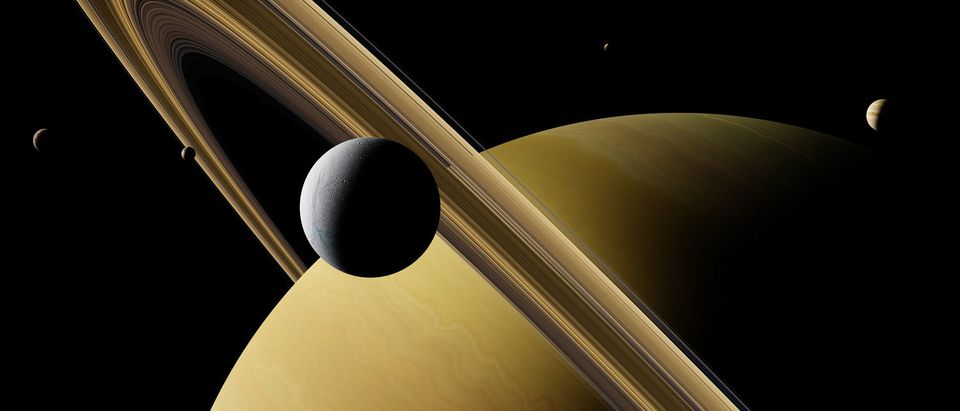The Cassini space probe found molecules integral to the development of life on one of Saturn’s moons, according to a new study.
A team of U.S. researchers argue in a new study that molecules found Titan could drive the production of complex organic compounds and create alien life.
“These inspiring results from Cassini show the importance of tracing the journey from small to large chemical species in order to understand how complex organic molecules are produced in an early Earth-like atmosphere,” Nicolas Altobelli, a scientists on the Cassini mission, said in an press statement. “While we haven’t detected life itself, finding complex organics not just at Titan, but also in comets and throughout the interstellar medium, we are certainly coming close to finding its precursors.”
These molecules have never been seen in our solar system before, suggesting Titan may host some form of primitive life. The study also suggests Titan may provide clues to how life formed from chemical reactions on Earth.
These molecules include amino acids that can be assembled into proteins, RNA and DNA in living cells. They are commonly refereed to by scientists as “the building blocks of life.” Researchers were able to confirm that these molecules are being created on Titan today.
Titan has even been judged the most likely place beyond the Earth to host life by NASA scientists.
There is strong evidence that actual liquid water could also be present on Titan below the surface. Saturn’s powerful gravity stretches and deforms Titan as the moon orbits the gas giant. Scientists have concluded that if Titan were composed entirely of stiff rock, the gravity of Saturn would cause bulges, or solid “tides,” only 3 feet tall. Instead, Cassini detected huge tides of roughly 30 feet in height in the moon’s oceans, indicating a liquid core.
Cassini launched from Earth in 1997 and took seven years to get to Saturn. On its 13-year orbit of Saturn’s moon, the probe made numerous scientific discoveries. The probe also found oceans on the moons Dione and Enceladus. NASA will dispose of the probe in Saturn because it is almost out of fuel.
NASA’s Jet Propulsion Laboratory estimates the mission has cost $3.26 billion. The U.S. shouldered $2.6 billion of of the bill and the European Space Agency (ESA) kicked in $500 million.
Send tips to andrew@
All content created by the Daily Caller News Foundation, an independent and nonpartisan newswire service, is available without charge to any legitimate news publisher that can provide a large audience. All republished articles must include our logo, our reporter’s byline and their DCNF affiliation. For any questions about our guidelines or partnering with us, please contact licensing@dailycallernewsfoundation.org.


